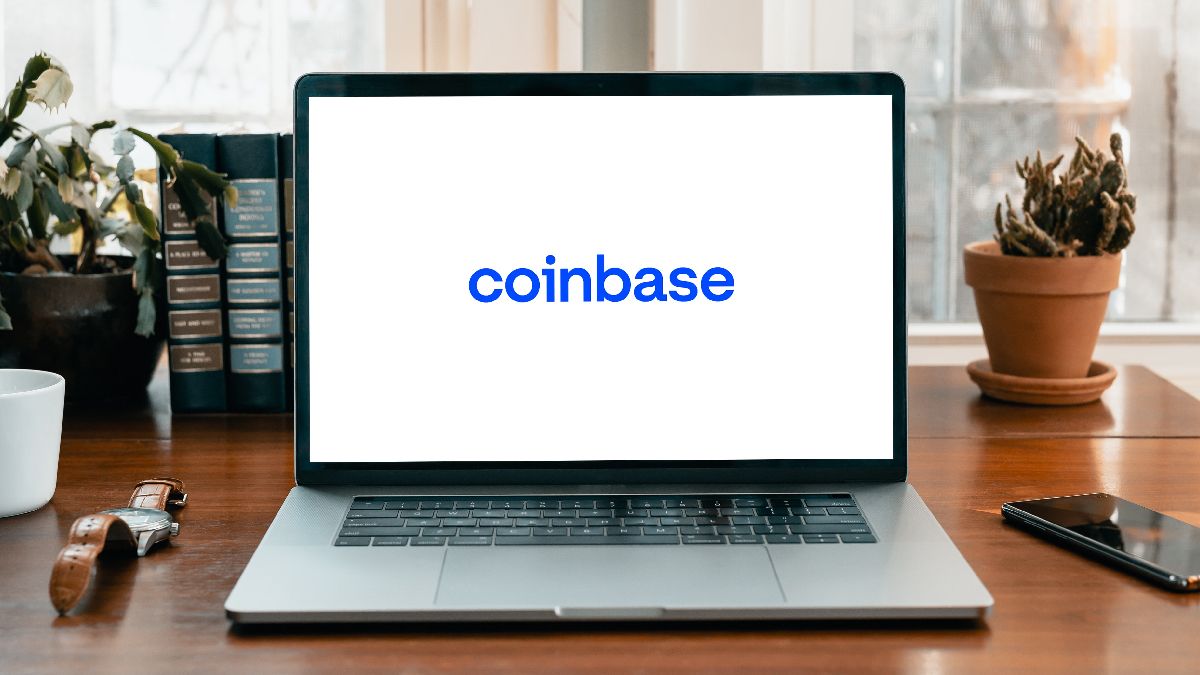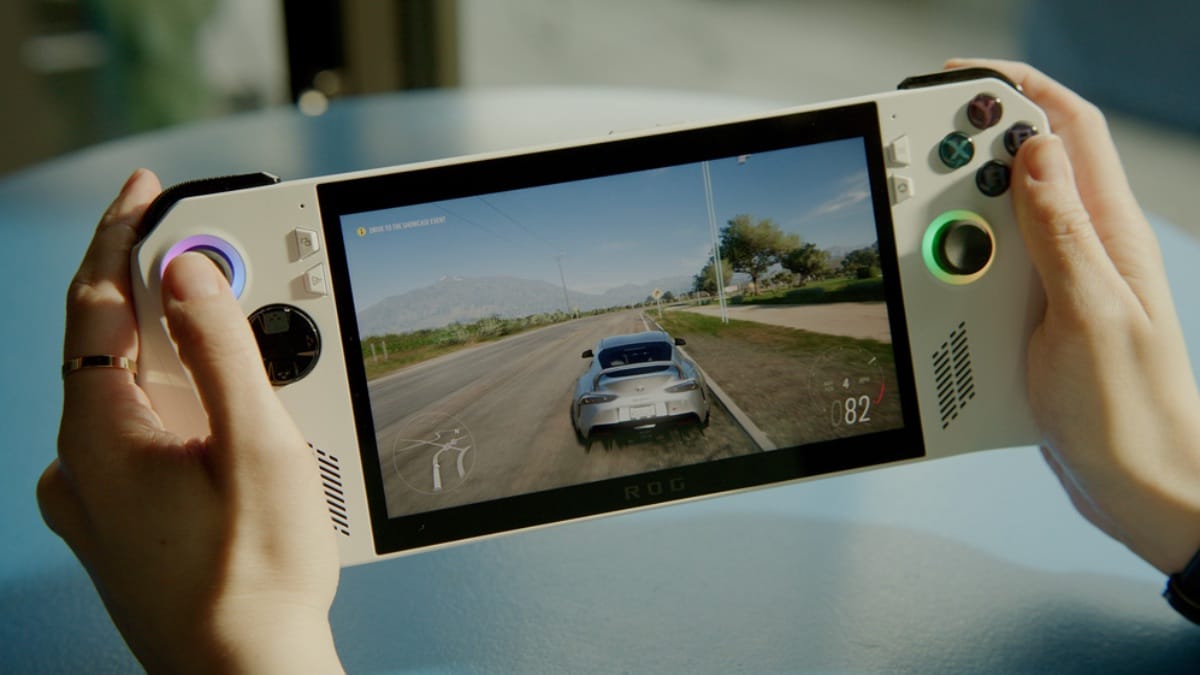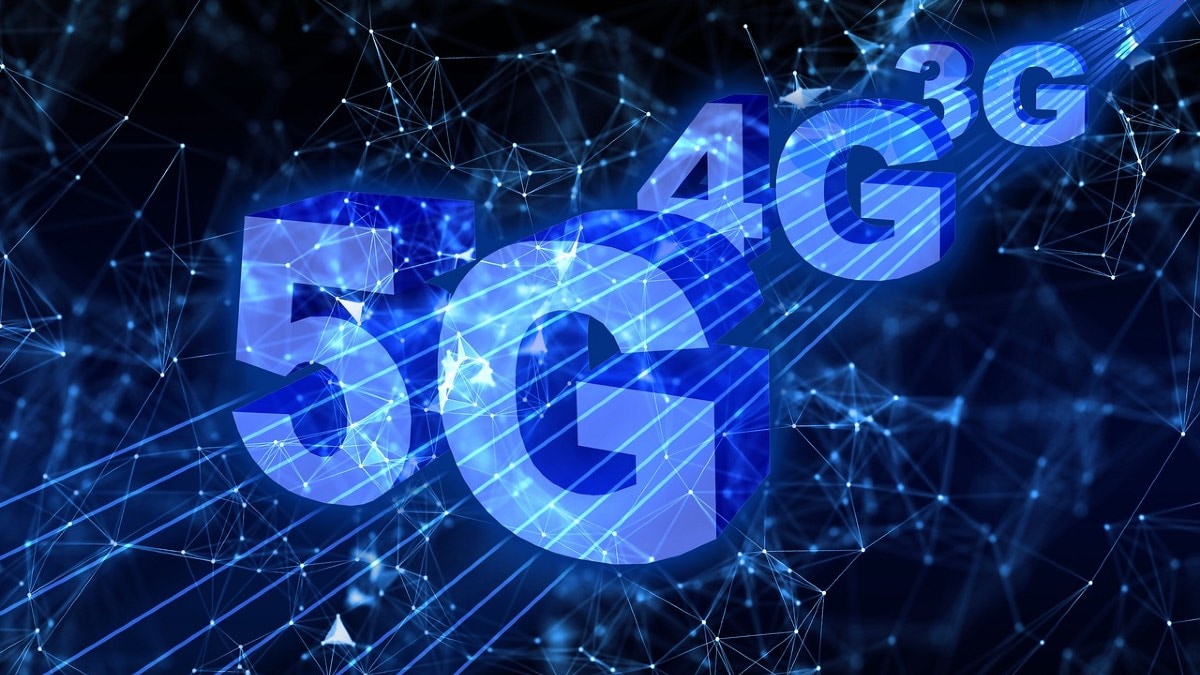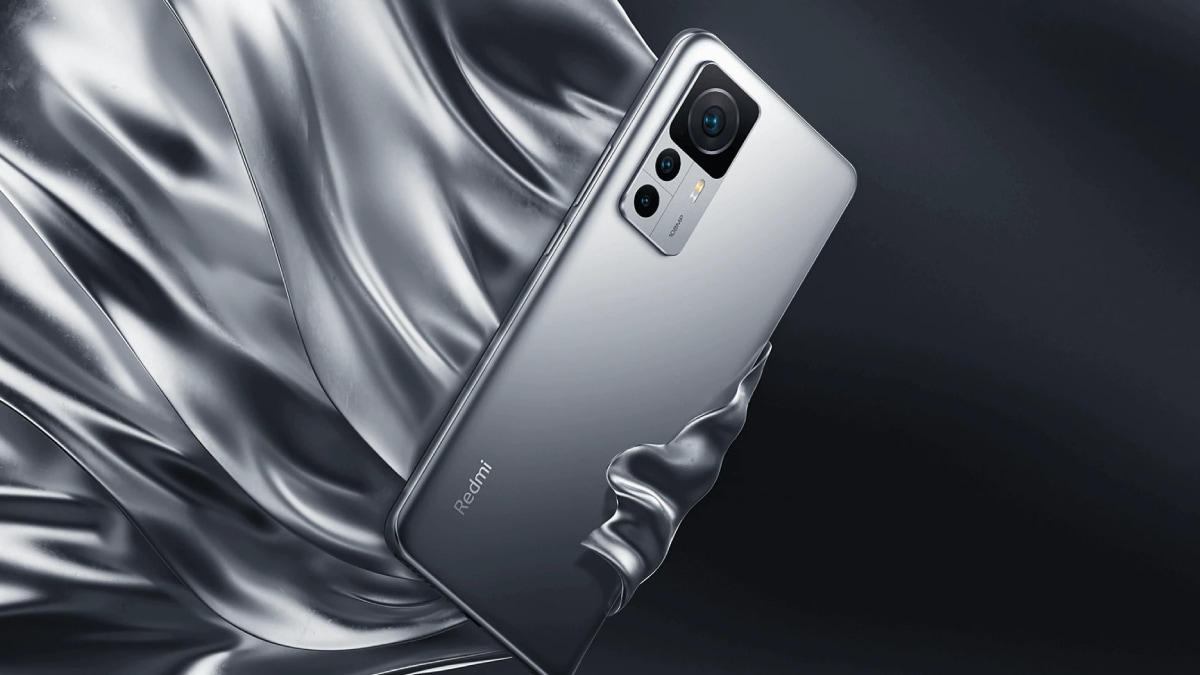Gadgets And Technology Daily News | 22 Jun 2023

Views (155)

OnePlus Pad Gets OxygenOS 13.1 Update in India, Brings Cellular Data Sharing Feature

OnePlus Pad was launched earlier this year in February at the OnePlus' Cloud 11 event. The tablet is now getting updated to the latest OxygenOS 13.1. The update brings in features like cellular data sharing and a new multiscreen connection. OnePlus Pad comes preloaded with Android 13-based OxygenOS 13. The latest OxygenOS 13.1 update is also rolling out to the OnePlus 11, OnePlus 11R, OnePlus 10T, OnePlus 10R and other OnePlus' numbered series smartphones.
OnePlus announced the rollout of the latest software update today. The OxygenOS 13.1 update for OnePlus Pad brings several improvements and new features including cellular data sharing, and multiscreen connection. With the cellular data sharing feature, users will be allowed to access their OnePlus phone's data on the OnePlus Pad by logging into the same account. They can browse the internet, answer calls, and send/receive text messages as well as share cellular data without having to set up a mobile hotspot. Do keep in mind, however, that the feature works within a 10-meter distance.
To use this functionality, users will be required to first log in to the same account on both their OnePlus phone as well as the OnePlus Pad and then turn on the WLAN and Bluetooth on the two devices. Once done, they can enable Quick Connect and Auto Connect settings, followed by Mobile Data Sharing, Calling Sharing, and Messaging Sharing in the Multi-Screen Connect settings. After this, users need to disable the WLAN in order to access cellular data sharing on the OnePlus Pad.
In addition to this, the latest OTA update Auto Connect and Relay Playing features offer cross-screen functions and enable users to easily switch between the OnePlus smartphone and OnePlus Pad. Notably, these features are only accessible on OnePlus smartphones running OxygenOS 13.1 including OnePlus 8 and above numbered series of handsets.
OnePlus launched the OnePlus Pad at its Cloud 11 event alongside OnePlus 11 5G, the OnePlus 11R, and OnePlus Buds Pro 2. The tablet sports an 11.61-inch display with a refresh rate of 144Hz. It runs Android 13 out-of-the-box and is powered by a MediaTek Dimensity 9000 SoC.
Asus ROG Ally Price in India Revealed Ahead of July 12 Launch Date: All Details

Asus ROG Ally will be launched in India on July 12, the company announced on Wednesday. The Taiwanese firm's first Windows-powered handheld gaming console will go on sale during a flash sale on Flipkart for one day on July 7, according to Asus. Last week, Asus teased the arrival of the ROG Ally via a Twitter post. The gaming console sports a 7-inch full-HD display with a 120Hz refresh rate and is powered by AMD's recently introduced Z1 Extreme APU, paired with 16GB of RAM.
Asus ROG Ally will be priced at Rs. 69,990 in India. The device will be launched in India on July 12, and will go on sale for one day on July 7 as part of a flash sale on Flipkart. The device will be available for purchase in India via the Asus e-shop and Flipkart, as well as Asus Exclusive Stores and ROG Stores in the country
The company has also announced that the first 200 customers to purchase the Asus ROG Ally, after registering for a promotion on the company's website, will receive a complimentary ROG Ally case worth Rs. 2,000.
The Asus ROG Ally that was recently introduced in the US and global markets runs on Windows 11. It is powered with AMD's Z1 and Z1 Extreme chips with AMD RDNA3 graphics paired with 16GB of LPDDR5 RAM. To store your games, you get 512GB of NVMe storage.
This handheld gaming console sports a 7-inch full-HD (1,920x1080 pixels) IPS display with a 120Hz refresh rate, 7ms response time, and up to 500 nits of peak brightness. The Asus ROG Ally is equipped with ABXY buttons, thumbsticks, a D-pad, bumpers, and analogue triggers.
On the connectivity front, the Asus ROG Ally supports Wi-Fi 6E, Bluetooth 5.2, and a USB Type-C port. It has a dual speaker setup with Dolby Atmos and an array microphone with AI noise cancellation technology. The console runs on a 40Whr battery with support for 65W wired charging, according to the company.
5G in India Seen Accounting for About 57 Percent of Mobile Subscriptions by 2028: Ericsson Mobility Report

The 5G subscription in India is estimated to have reached about 10 million by 2022 end, and is seen accounting for about 57 percent of mobile subscriptions in the country by the end of 2028, making it "the fastest growing" 5G region globally, according to Ericsson Mobility Report.
With the launch of 5G services in October 2022, the major 5G Indian market is witnessing huge network deployments under its Digital India initiative, it observed.
The geopolitical challenges and macroeconomic slowdown in some markets notwithstanding, communications service providers globally are continuing to invest in 5G, the June 2023 edition of the Ericsson Mobility Report revealed.
"5G subscriptions in India reached about 10 million by end of 2022 and are estimated to account for about 57 percent of mobile subscriptions in the country by the end of 2028, making it the fastest growing 5G region globally," it said.
The fifth generation mobile subscriptions are growing in every region and forecast to top 1.5 billion globally by the end of 2023.
The uptake of 5G subscriptions in North America has been stronger than expected in previous forecasts. The region had the highest 5G global subscription penetration at 41 percent at the end of 2022.
Global mobile network data traffic continues to rise with the monthly global average usage per smartphone expected to exceed 20GB by the end of 2023.
The report also highlighted the continued revenue growth in leading 5G markets.
"The global adoption of 5G technology has surpassed one billion subscriptions, bringing positive revenue growth for communications service providers in leading 5G markets," Fredrik Jejdling, Executive Vice President and Head of Networks, Ericsson, said.
In the past two years, the 5G introduction in the top twenty markets has resulted in a seven per cent revenue boost, Jejdling said, underlining a strong link between the increase in 5G subscriptions and service revenue.
Globally, around 240 communications service providers (CSPs) have launched commercial 5G services and about 35 have deployed or launched 5G standalone (SA). The most common 5G services launched by service providers for consumers are enhanced mobile broadband (eMBB), Fixed Wireless Access (FWA), gaming and some (Augmented Reality and Virtual Reality) AR/VR-based services, such as training and education.
The report also reveals that 5G continues to drive innovation in mobile service packaging.
Among communications service providers, it is increasingly common to offer bundles with various popular entertainment services such as television, music streaming or cloud gaming platforms.
About 58 percent of 5G service providers currently do so in various forms.
As per Ericsson, by 2028, 5G is estimated to account for almost 80 per cent of all FWA connections.
Redmi K60 Ultra Spotted on 3C Certification Website, Charging Capacity Hinted

Redmi K60 Ultra has reportedly been spotted on the 3C Certification site, revealing the expected charging capacity of the handset. The phone is listed on the 3C certifications website with model number 23078RKD5C. It is speculated to support 5G network connectivity. The smartphone is likely to join the last year's Redmi K60 series lineup soon. However, the company is yet to share any details on the purported smartphone. Redmi K60 Ultra could succeed the Redmi K50 Ultra launched in China in August last year.
According to a report by MyFixGuide, a new Redmi smartphone recently visited the China 3C certifications website with the model number 23078RKD5C. The phone is expected to be Redmi K60 Ultra, which will join last year's Redmi K60 series. Though the company hasn't revealed any details on the same, the 3C Certification website listing suggests an imminent launch in China. The listing also revealed the charging capacity of the phone which could be 120W. Additionally, it also revealed that the handset will support 5G connectivity.
Recently, the design renders of the Redmi K60 Ultra were tipped, revealing some more details of the phone. The leaked images suggested that the phone will ship with thin bezels, a rectangular-shaped rear camera module housing three sensors, and an LED flash unit. The phone will reportedly have a hole punch cutout on the display for the selfie camera. It is also said to be powered by a MediaTek Dimensity 9200 SoC.
The smartphone was also spotted on the IMEI database with model number 23078RKD5C.
The Redmi K60 Ultra is expected to succeed the Redmi K50 Ultra launched last year in August. The smartphone features a 6.7-inch OLED display with up to 120Hz refresh rate. It is powered by a Qualcomm Snapdragon 8 Plus Gen 1 SoC paired with up to 12GB LPPDR5 RAM, 512GB UFS 3.1 storage. It packs a triple rear camera setup, led by 108-megapixel primary camera. The phone houses a 5,000mAh battery with support for 120W wired charging.
Ola Begins Construction Work of 100GWh Gigafactory in Tamil Nadu

Electric vehicle company Ola on Wednesday said it has commenced construction of its 100GWh gigafactory at its manufacturing facility in Tamil Nadu.
The company has installed the first pillar of its cell factory in Krishnagiri, Tamil Nadu today.
A gigafactory is a facility where equipment and components related to electrification and decarbonisation technologies are manufactured.
In February, Ola signed a memorandum of understanding with the Tamil Nadu government committing investments of Rs. 7,614 crore for manufacturing electric cars, two wheelers and lithium cell gigafactories in the state.
Spread across 115 acre, the Ola Gigafactory is expected to commence operations by early next year with an initial capacity of 5GWh (Giga Watt hours). It would be scaled up to 100GWh in phases, a company statement said.
On commencement of operations at full capacity, it is claimed that the factory would be one of the world's largest cell manufacturing facilities.
"This is a proud moment for us as we installed the first pillar of our gigafactory today. Our gigafactory will be a major milestone in India's electrification journey, bringing us closer to making India a global EV hub," said company founder and CEO Bhavish Aggarwal.
Ola has also invested in cell and battery research and development and has set up one of the advanced cell R&D facilities in Bengaluru.
As per the MoU signed with state government, the company would set up an electric behicle Hub which would house advanced cell and electric vehicle manufacturing facilities, vendor and supplier parks and the larger ancillary ecosystem for electric vehicles, at a single location.
Coinbase Launched Unusual Legal Offensive Months Before US SEC Crackdown

Months before cryptocurrency exchange Coinbase became the biggest target of the US crackdown on digital assets, the company launched an unusual legal offensive, recruiting top lawyers to try to shape court rulings in other cases.
Before the US Securities and Exchange Commission sued Coinbase on June 6, the company had weighed in on two other crypto-related lawsuits brought by the regulator and urged judges to adopt views on open legal questions that are now at the heart of its own case.
In each case, Coinbase filed briefs as an "amicus," or friend of the court.
While common at the US Supreme Court, amicus briefs are filed in just 0.1 percent of cases in federal trial courts, according to law firm Gibson Dunn & Crutcher, although crypto industry groups have been filing an increasing number in SEC cases in support of defendants.
A ruling favoring another crypto defendant at the trial court level would not be binding on Coinbase's own case, but the company could potentially point to it in its defense, legal experts said. The few judges who have previously ruled in similar cases have endorsed the SEC's approach.
Filing amicus briefs in the trial court is about starting "the ball rolling in the right direction" on legal issues that the amicus cares about, said Akiva Shapiro, one of the authors of the Gibson Dunn study.
Gibson Dunn represents Coinbase as an amicus in one of the cases.
Spokespeople for the SEC and Coinbase both declined to comment.
For years, the regulator had pursued developers for selling digital tokens without registering them. But it has recently shifted focus to the bigger players like exchanges as it tries to corral what SEC Chairman Gary Gensler called "the Wild West."
The SEC's biggest US target is now Coinbase, which it sued in Manhattan federal court. It accused the company of operating an unregistered exchange, broker and clearinghouse, saying at least 13 of the crypto assets it made available to US investors, including Solana, Cardano and Polygon, were securities.
Paul Grewal, Coinbase's general counsel, told Reuters the day the case was filed that the company is "absolutely committed to defending itself in court."
Legal test
Coinbase began its broader legal push last year, after the SEC started investigating it, tapping major corporate defense law firms Gibson Dunn and Cahill Gordon & Reindel to file papers in the two cases.
In one instance, the company urged US District Judge Tana Lin in Seattle to dismiss an insider trading case brought by the SEC against former Coinbase product manager Ishan Wahi.
Coinbase itself was not a defendant in the case.
Wahi and his brother settled with the SEC after pleading guilty to related criminal charges, so Lin never ruled.
The exchange's main argument in its amicus brief, which could preview its defense in its own case, is that the SEC lacks authority to police the space because many digital assets are not securities.
The company argued the SEC has misapplied a legal test that says "an investment of money in a common enterprise with profits to come solely from the efforts of others," is a kind of security called an investment contract.
Coinbase argued the digital assets on its platform do not pass that test, in part because they lack contractual agreements.
The SEC has argued that the test — which has been applied to investments in everything from whiskey casks to chinchillas — depends on the economic realities of transactions, not the labels applied to them.
The regulator has urged judges to focus on the way digital assets are marketed, pointing to promises by crypto developers that investors will profit if their projects succeed.
'Fair notice'
Coinbase also argued in its brief that the SEC has not set clear guidelines that would give cryptocurrency industry participants "fair notice" that a particular digital asset is a security before suing, violating their right to due process under the US Constitution.
Gensler has been dismissive of the argument, saying many companies in the space had made a "calculated economic decision" to flout the rules.
In its other amicus brief, Coinbase urged a federal judge in Manhattan to allow the fair notice defense in the SEC case against Ripple Labs, which was the industry's highest-profile battle with the regulator prior to the Coinbase case.
The regulator sued in 2020, accusing the San Francisco-based blockchain company and its current and former chief executives of conducting a $1.3 billion (nearly Rs. 10,660 crore) unregistered securities offering by selling the crypto XRP, which Ripple's founders created in 2012.
Coinbase argued to US District Judge Analisa Torres that denying the Ripple defendants the fair notice defense "would jeopardize the validity of the defense in future cases."
More than a dozen other cryptocurrency industry groups and market participants have also filed amicus briefs to persuade Torres that XRP is not a security.
A ruling is expected this year.
© Thomson Reuters 2023
0 Likes
